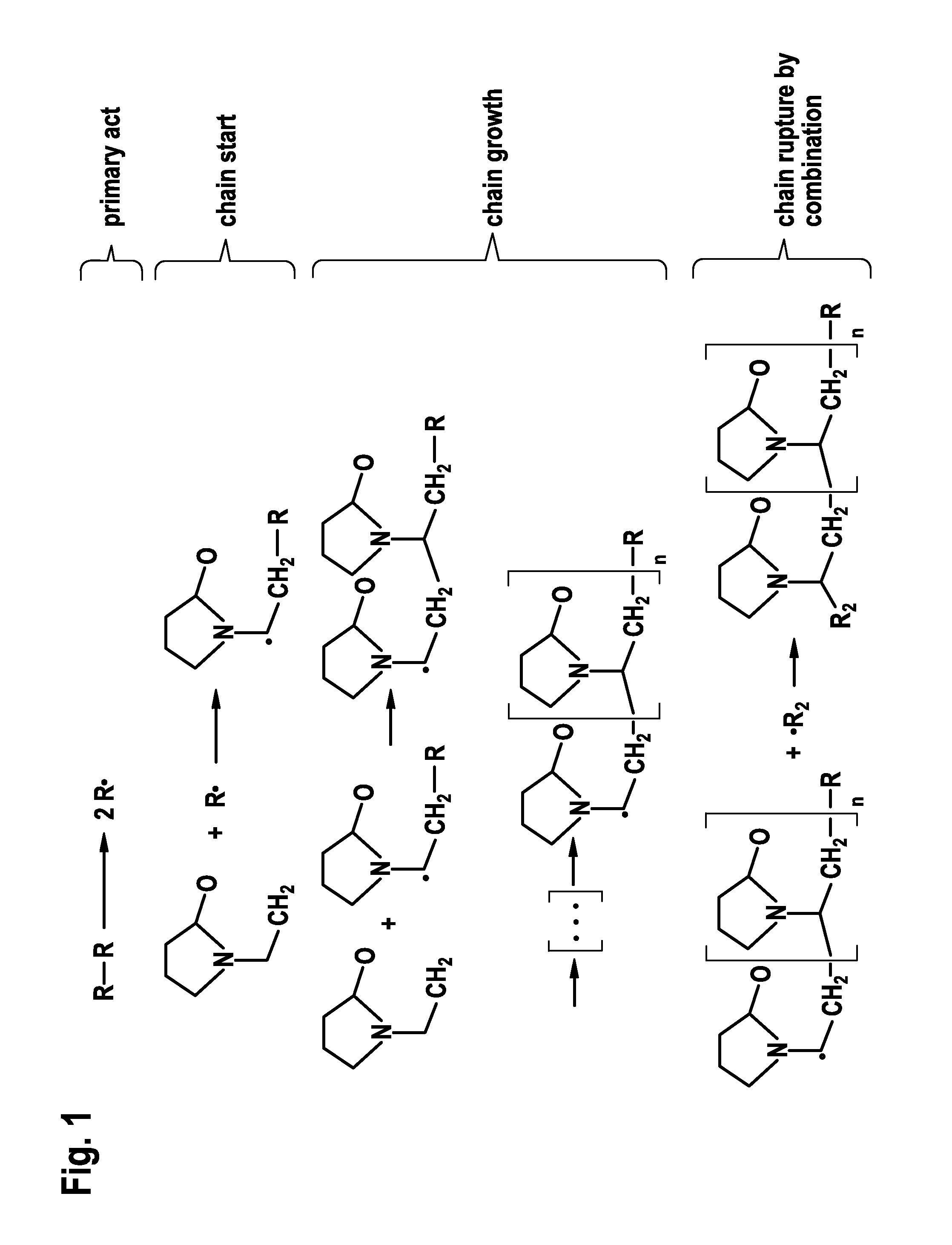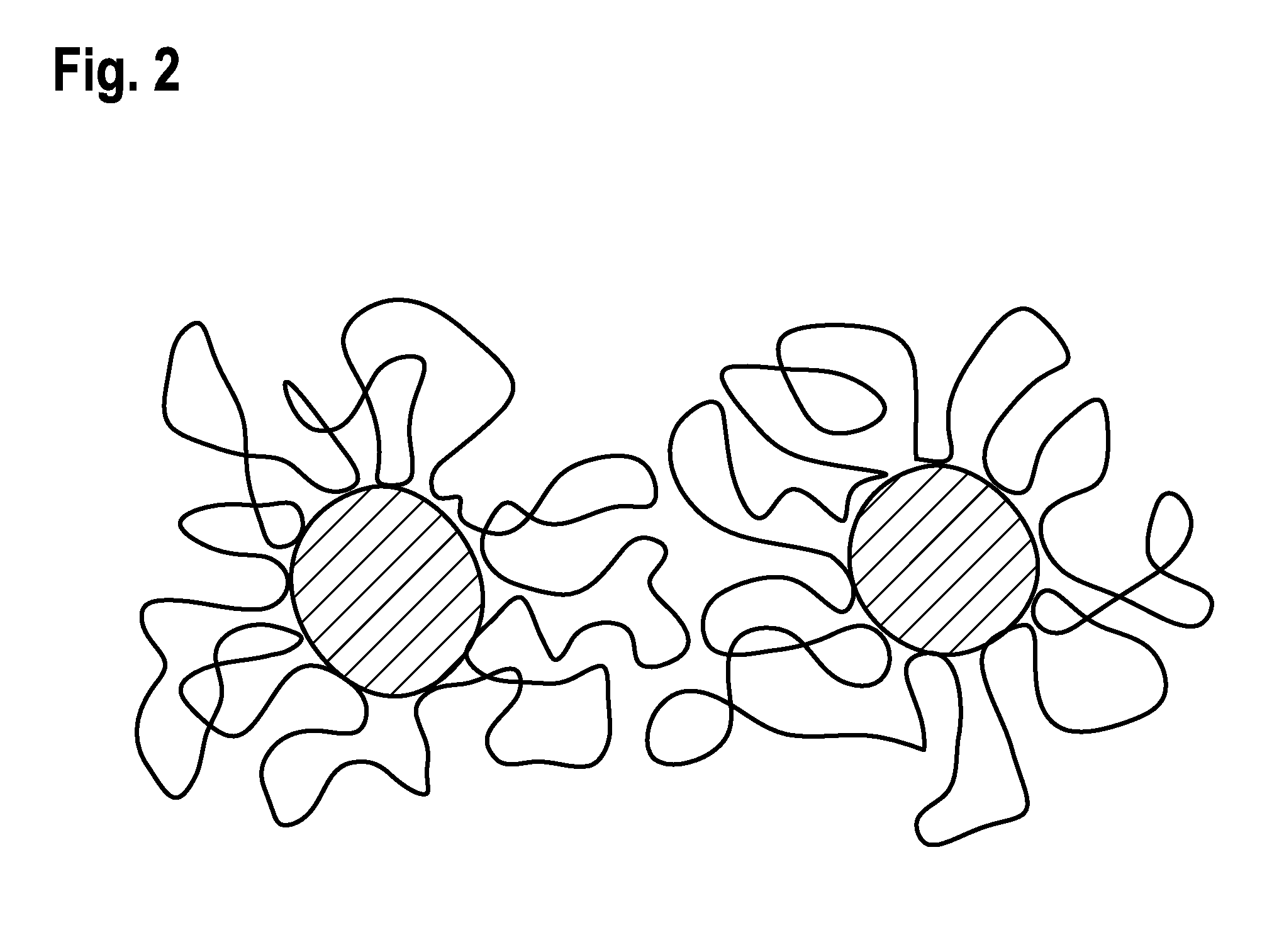Method for producing hydrophilic poly-N-vinylpyrrolidone and use thereof
a technology of hydrophilic poly-n-vinylpyrrolidone and poly-n-vinylpyrrolidone, which is applied in the field of process for the production of spherical polyn-vinylpyrrolidone particles, can solve the problems of adverse effect on separation efficiency, pressure/flow behaviour and reproducibility, and weak crosslinked seed particles also have poor swelling properties besides insolubility
- Summary
- Abstract
- Description
- Claims
- Application Information
AI Technical Summary
Benefits of technology
Problems solved by technology
Method used
Image
Examples
Embodiment Construction
[0036]With the aid of the novel method according to the invention, it is possible to produce PVP particles having average particle diameters in the range from <1 μm to ˜5 μm by dispersion polymerisation. The experiments carried out for development of the method have resulted in the discovery of the principal influencing quantities on the particle properties, meaning that products having desired particle sizes and size distributions can be produced specifically by the present process according to the invention. The process found can advantageously be carried out reproducibly, especially as it can preferably be carried out in an automatic synthesiser. As a consequence, reactor-specific variations in the particle size and size distribution are very small and attributable to differences in the temperature management in the individual reactors.
[0037]The particles produced by the process according to the invention have substantially bimodal size distributions, exhibiting a high degree of ...
PUM
| Property | Measurement | Unit |
|---|---|---|
| temperature | aaaaa | aaaaa |
| particle diameters | aaaaa | aaaaa |
| particle diameters | aaaaa | aaaaa |
Abstract
Description
Claims
Application Information
 Login to View More
Login to View More - R&D
- Intellectual Property
- Life Sciences
- Materials
- Tech Scout
- Unparalleled Data Quality
- Higher Quality Content
- 60% Fewer Hallucinations
Browse by: Latest US Patents, China's latest patents, Technical Efficacy Thesaurus, Application Domain, Technology Topic, Popular Technical Reports.
© 2025 PatSnap. All rights reserved.Legal|Privacy policy|Modern Slavery Act Transparency Statement|Sitemap|About US| Contact US: help@patsnap.com



